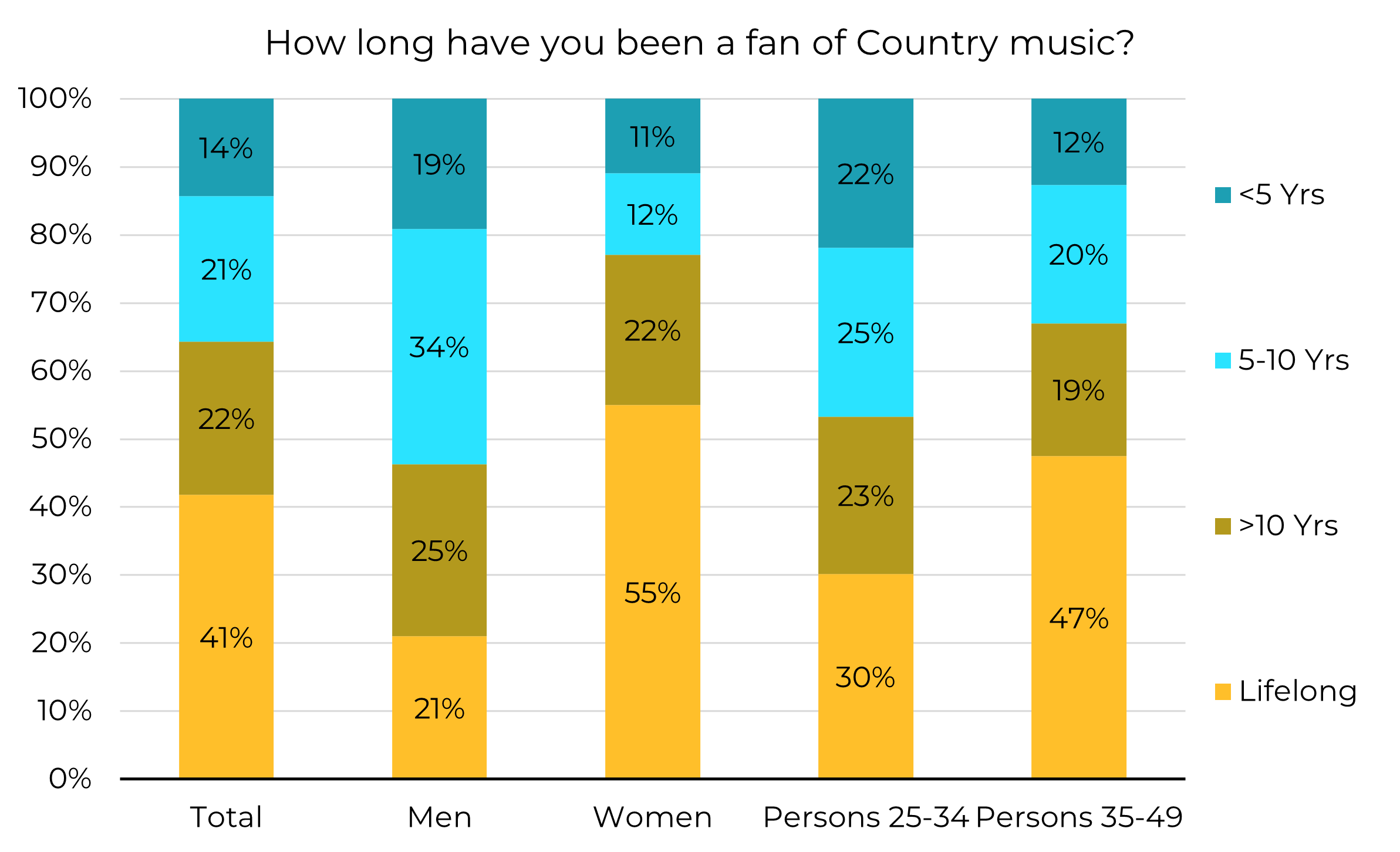Making the Most of Music Test Screens

We’ve gotten nice feedback on last week’s CRS 360 session, “If the Song Fits, Play It.” Carolyn Gilbert and I presented findings of a fresh set of data concerning whether or not a sample of Country music fans felt that each of thirty-five titles selected by CRS leadership belonged “on a Country radio station or a Country playlist.” You can find a recording of the webinar here.
The nationwide sample of 311 adults 25-49 balanced 40% men/60% women, mimics the most recent trends in Country radio music tests. As we teased here last week and reviewed in detail in the webinar, we found that newer Country fans – those who’ve become Country fans in the past five years – showed some strong differences from longtime Country fans when it came to saying which songs belong with Country.

Those Country newbies were almost twice as likely to be men and almost twice as likely to be in the younger segment of our sample. In the analysis, they’re more likely to include Country duets where longtime Country artists perform alongside mainstream pop artists in their definition of Country, for example.
It’s one more factor to keep those scheduling music on their toes – and it brings up a discussion of music test screening. Radio stations must constantly work to graduate those who listen less to being those who listen more – you can think about it as P2 moving to P1 or just getting that listener to spend more time with you and less time with other choices. Thinking in terms of share in radio, we’ve traditionally thought about a zero-sum game – any TSL you don’t get is going to another station down the dial. For those with access to newer car audio systems, however, the TSL you don’t get may just as easily go to a DSP.
It’s a matter of balancing the tastes of all parts of your constituency with your one music stream. The best-testing songs in your library are likely to be negatives or neutrals for at least 20% of your audience. So many music programming rules are trying to ensure you’re not asking the same listener to put up with more than one song in a row that they don’t like.
Ultimately music testing is a tool to build TSL. For mature stations we always advise keeping your music test sample within your own cume, but there are stations that want to ensure all their respondents are core to their own station or its archrival.
It’s rare for stations to convert even 30% of their cume to “core” these days. As music researchers that means we go through lots of cumers to build a sample of 50% station core. Now think about competing station core: even an archrival station is likely to duplicate no more than 60% of your cume. Shared cumes generally break down into three groups: about a quarter are your core, about a quarter are the rival’s core and the remaining half are core to some other station. That means that, as they fall naturally, the rival’s core listeners might represent about 15% of your cume.
Stations that are fixed on getting half their sample as core to a rival often do so by including core listeners of the rival station who don’t cume their station. In effect, they end up trying to modify the TSL of people who never listen to them. We think it’s smarter to ensure your music test samples are a strong representation of your cume. Stratify by TSL so you have breakouts of those who listen a lot and can try to manage getting those who listen less to become people who listen to you more.
Make sure you have breakouts that allow you to explore the varied tastes of important subgroups in your cume. Include a wide enough demo that you can compare tastes of younger listeners versus older listeners. If your station has a history of delivering less than 70% of its AQH to one gender, include a segment of the other gender in your testing – so you can manage your schedule using that information as well.
In the Country example explored earlier, having a breakout to show newer fans of Country compared to lifelong fans can aid in sequencing. You’re going to play only the more popular titles. The important detail is ensuring you’re not asking the same listener to put up with more than one song in a row that they’re not so thrilled about. The goal is to get every quarter hour you possibly can, right?




